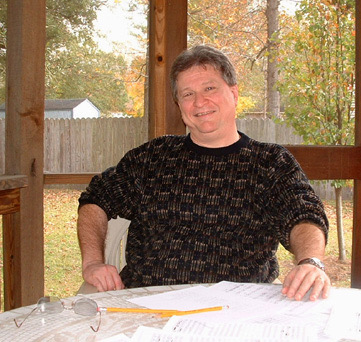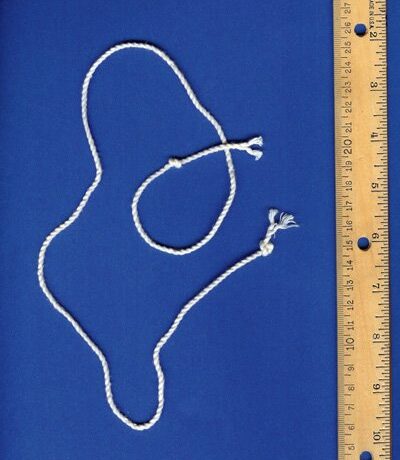A fascinating document appeared yesterday on our prison computer billboard along with the usual notices about upcoming sports events, laundry schedules and the daily static buzz of prison life. This document is fascinating for many reasons, not the least of which is why such a document would be posted on a prison computer billboard at all. The document originated in the Federal Bureau of Prison’s (FBOP) DEIS (Department of Environmental Impact Studies). Its purpose was to examine in detail the environmental impact of a new prison to be constructed in Fletch County, Kentucky.
My first question was where the heck was this place? A look on my map established that the planned location for this new prison was in extreme Eastern Kentucky, almost at the border with West Virginia. I’m familiar with the area somewhat. I was incarcerated at Ashland FCI for the first four years of my sentence. Ashland FCI is roughly forty or fifty miles north of the proposed construction site.
Upon skimming through the document (which is 181 pages in length, and that’s with the omission of several appendices), I learned that Congress approved the construction for this prison in 2006. Eighteen years later the government seems still to be figuring out what the environmental impact of the construction and operation of the facility might be.
In these past years, too, the concept of prison has gone through variations. The Bureau of Prisons (BOP) is no longer in “lock ’em up and throw away the key” mode. They’ve been trying to reduce the U.S. prison population which, including state institutions, is the largest in the world. The Kentucky prison in the document I saw on our computers was originally designed for high security AIC (that’s the current acronym for incarcerated adults. The terms “prisoners” or “inmates” is no longer politically correct). In its present transformation the prison will be a “medium” security facility housing roughly 1152 medium security AIC and some 256 camp-level AIC.
What strikes me, first of all, is just the basic idea of the need for another prison. And, more importantly, another prison in Kentucky. In square miles, Kentucky contains more prisons than any other place on Earth, literally. The economy in the Eastern Kentucky region, the proposed building site for the new prison, used to be based on mining and industry. All that is practically gone. Kentucky has been in the process of converting in recent times to a service-driven economy. According to a Vera Institute study, “the state has undergone significant economic restructuring. Kentucky’s economy over the last 30 years has shifted away from goods-producing industries such as manufacturing, construction, and mining and toward service providing industries such as health care, social assistance, educational services, and other professional services.” That one of these “services” happens to be incarceration, the warehousing of humans, should be of concern to us as a “civilized” people.
Should incarceration really be thought of as an economic “activity?” Leaving aside the ironic fact that we have a Republican candidate with more criminal and legal proceedings against him than would be credible in a fictionalized TV drama, we should really take stock of where we are as a society when we continue to draw up elaborate plans and seek community support to lock up more people. There are already 24 million felons in the U.S. How much further can we push the criminalization envelope in society?
Coming back to my original thought: why was this document posted for inmates at a federal institution? True, the DEIS calls for statements from the community, possible objections perhaps to the construction of the facility. But are prisoners really part of any community? We are outcasts, rejects, losers with no voice or vote. What do our opinions and/or objections matter? Could it be that someone at this facility or perhaps in the BOP wanted us to know about possible future accommodations (new “digs”)? Is this some weird way to maybe entice some of us to want to move to this brand spanking new prison where pipes won’t leak, walls won’t crumble, roofs won’t fly off in windstorms, black mold won’t proliferate in the ventilation vents? In this way, wouldn’t the BOP be acting as a real estate agent showing prospective clients who are dissatisfied with their current abode other possible options? I don’t know but I hope that is not the case.
The motives of the BOP are always murky, suspicious, and often inscrutable. It is after all an institution assigned the Sisyphean task of incarcerating people, obsessed with security, secrecy, and politically correct (if not always transparent) protocols, even as it is swamped with corruption, ineptitude and inefficiency coming in dead last in the ratings given government agencies by the government itself, by the GOA (Government Oversight Agency). The BOP has been, for the past thirty years, a fiefdom free from true oversight and oblivious to all outside supervision. It has resisted mandates from judges, senators and congressmen and pursued its own agendas, lived by its own rules. The BOP’s behavior is not very different from the historical model of the jailer, a mean cuss who does his dirty job, a job society has assigned him, as he sees fit, and church ladies and their calls for humane treatment be damned. I’m reminded of the angry character played by Jack Nicholson in “A Few Good Men,” a general in command of the Guantanamo base in Cuba during the war on terror who, when pressed, finally addresses the issue of the dangerous and undesirable duty he’s bound to: “The TRUTH?” he intones savagely. “You CAN’T HANDLE the truth!”
But maybe we SHOULD handle it. We NEED to handle it.
It is not surprising that the new proposed facility in Kentucky is being deemed a medium– security institution. For some time, the BOP has been slowly and surreptitiously attempting to transform itself so that high- and low-security levels are no longer sharply differentiated, so that everything lies in some golden mean, all crime reduced to some simplistic generalized denominator allowing all sorts of people to be incarcerated together, whether violent or not. About 20 years back, President George W. Bush questioned whether low security prison camps were even necessary. No one took his query seriously and the system lumbers on holding prisoners who are mostly trustworthy and rehabilitated (or at least as trustworthy as anyone else on the street) far beyond any reasonable necessity for detention. What W might not have known is that the BOP commonly needs camp prisoners to do work outside the prison walls: landscaping and exterior maintenance that inmates inside the fence are not legally allowed to do. Camp inmates are an economic necessity. The BOP is well aware of society’s pressure to change the criminal system’s draconian sentencing parameters so, for the moment, it is redefining itself in order to eventually avoid the classification of “low level” or “high level” “occupants.” All inmates, all prisoners will be on the same level and be treated with similar harshness and loss of liberty, while kept “safe” by a “professional” staff: officers (whom Senator Ted Cruz has referred to as “meat-eaters”) and medical, business, and educational workers (the “vegetarians’” one would suppose). The BOP continues to have problems meeting their needs for just such a staff, perhaps because it is becoming increasingly difficult to find people who like to impose misery on others.
The current staff of the BOP is woefully inept and tragically unable to carry out the absurd mandates the courts and Congress have set forth. According to BOP Director Colette Peters, responding to congressional questioning, “One in three [BOP staffers] have symptoms of PTSD. That means more anxiety, more depression, [and] that means more reliance on substance abuse and higher levels of divorce. Over 90% are obese, on in the overweight category, over 90% have hypertension or pre-hypertension . . . What we’re finding across the country, in some places they can leave the [BOP] and work for state corrections and make two to three more times more, let alone the bonuses that we’re battling against at fast food organizations . . . [Also], the average onboarding for law enforcement in this country is 21 weeks [of training], and our officers receive about six” (“Peters May Be The One – Update for March 5, 2024” Lisa-Legal Info).
Prison reformers should take note, however: the problems with incarceration in the U.S. do not originate in the prison system. It is our justice system, our courts, our laws that need a major overhaul. It is the courts and Congress who fail to grasp the impact of incarceration, not just in how the creation of facilities or inadequately staffed agencies impact the physical environment. “Impact” studies should be carried out on the human environment. A recent Rand Corporation study revealed the impact of overdose deaths over the last twenty years, finding that 125 million people had been affected by the deaths of loved ones or friends. There were 1.1 million deaths from drug overdoses in that period. In the same period of time over 24 million people became felons. Has any agency conducted an impact study on the economic, emotional, and social effects from such a staggering number? Just exactly what is the end game of such an out-of-control incarceration rate? Where are we headed as a society with thousands of laws that fail to curb our violent ways and are perhaps only adding fuel to the fire? Prison should not be a “business’,” an “industrial complex,” or a “service.” It is a blight. When so many persons are being transformed daily into “inmates” who must spend a large part of their lives isolated and warehoused, something essential is amiss.
The impact study that should be conducted is on the results of long sentences and vicious prosecutorial activity, a true cost-benefit study. Such a study, I suspect, will reveal that we need to spend more money on education, on the arts, on cleaning up our environment and less on impact studies for the construction of more prisons.




No Comments